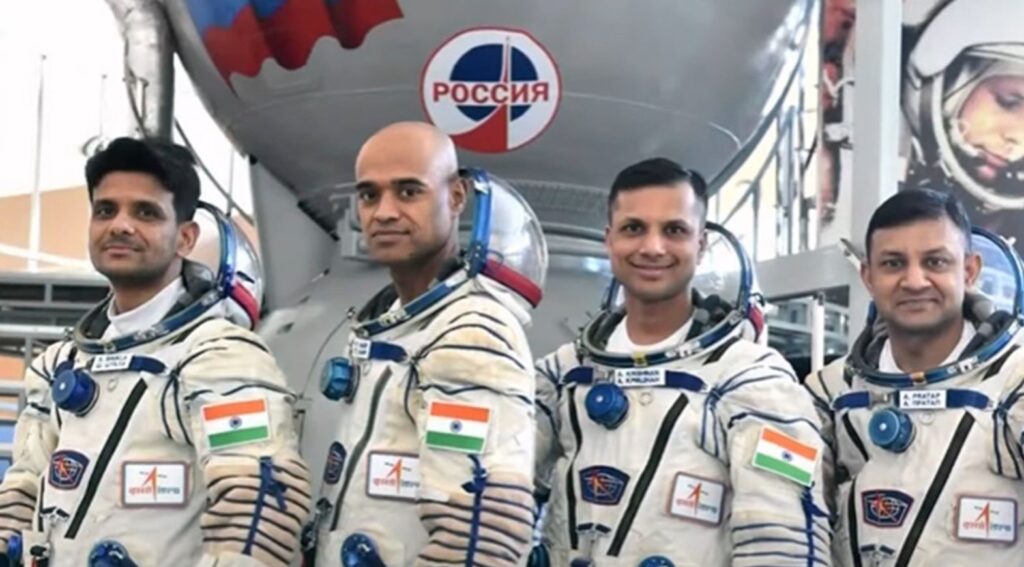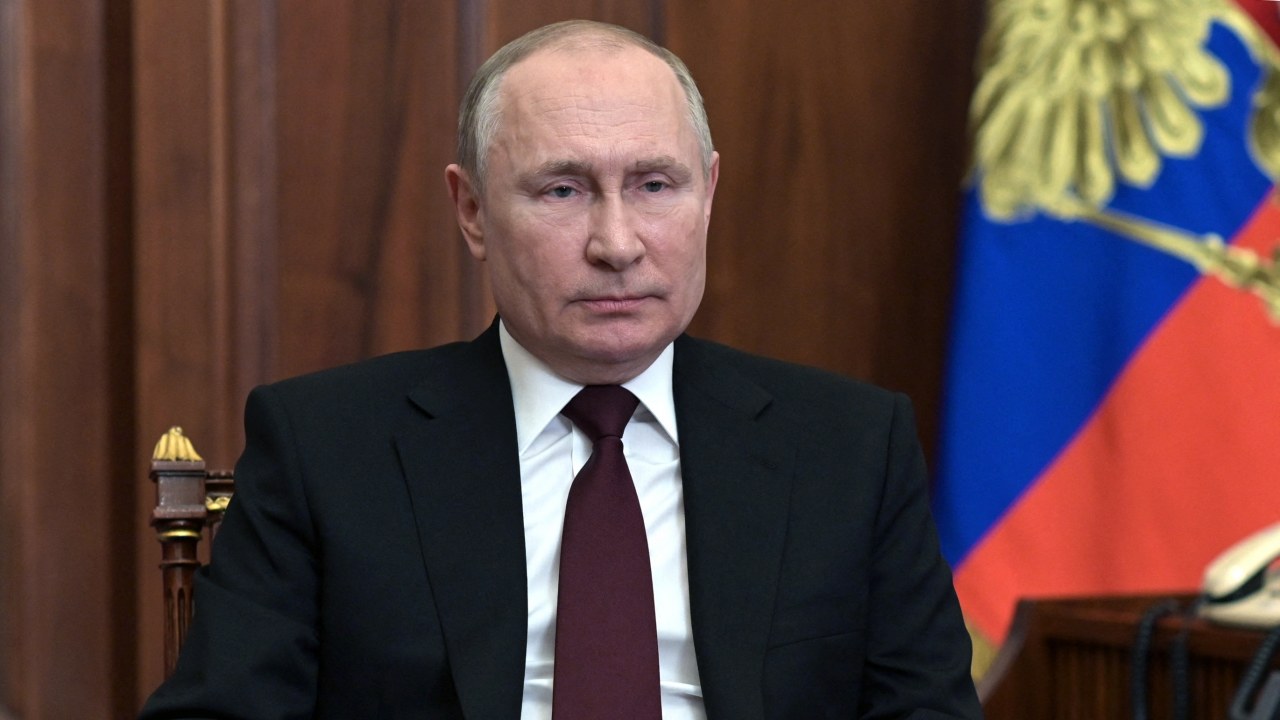
When he initially presented the astronauts to the world, Modi described them as the “four forces” who would bear the hopes and dreams of 1.4 billion Indians. Isro announced 4 astronauts for india’s 1st ever manned space mission
The four top fighter pilots of the Indian Air Force (IAF), known as “astronaut designates,” were presented to the world by Prime Minister Narendra Modi on Tuesday. They have been chosen to be taken to space as part of India’s first human-manned spaceflight, the Gaganyaan mission.
During Modi’s visit to the Vikram Sarabhai Space Centre (VSSC) research institute in Thiruvananthapuram, Kerala, the Indian Space Research Organisation (Isro) made the announcement regarding the astronauts.
The four astronauts, wing commander Shubhanshu Shukla, group captain Ajit Krishnan, group captain Angad Pratap, and group captain Prasanth Balakrishnan Nair of the Indian Air Force, have spent the previous five years undergoing intensive training in Russian and Indian facilities in preparation for the Gaganyaan mission. The Prime Minister gave them “Antriksh Yatri Pankh” (astronaut wings) during a ceremony on Tuesday.
Modi introduced the astronauts, referring to them as the “four forces” who will bear the hopes and dreams of 1.4 billion people.
“The ambitions of 140 crore Indians are being carried into space by the four astronaut-designates—they are more than just four names or personalities. They represent the faith, bravery, and discipline of modern-day India, according to Modi.
He emphasized that there will be a four-decade lapse before an Indian astronaut takes to space. But he stated that this time, there would be a noticeable difference because the work will be “Made In India.”
“Indians will be visiting space once more after more than 40 years away. However, this time, the rocket and the countdown will all belong to us, the prime minister declared.
Rakesh Sharma, a cosmonaut, is still the only Indian to have visited space. In 1984, he took to the skies in a Russian-built Soyuz spacecraft.
The goal of the Gaganyaan mission, which is scheduled for launch in 2025, is to showcase Isro’s capacity for human spaceflight by sending a three-person crew into a 400km low-Earth orbit for three days and safely returning them. This will be India’s first human spaceflight effort.
According to Isro Chairperson S Somanath, the Gaganyaan mission is expected to launch by 2025 and is moving forward at a “lightning speed.” “This year, Gaganyaan will have at least one unmanned flight,” he declared.
Three astronaut designates, or “vyomnauts,” will be chosen for the last trip from the four being trained.
At the Air Force Academy, Keralan group captain Nair, 47, is presented with the Sword of Honour. 1998 saw his commissioning into the IAF’s fighter stream. At the Air Force Academy, group captain Krishnan, 41, of Chennai, is the recipient of both the Sword of Honour and the President’s Gold Medal. He joined the IAF in 2003 and is currently a test pilot and flying instructor.
Flying teacher and test pilot Pratap, 41, hails from Prayagraj and was commissioned in 2004. The 38-year-old Lucknow native Wing Commander Shukla leads fighter combat teams and conducts IAF test flights. He was commissioned in 2006.
Also read: ISRO will carry out the Gaganyaan Mission’s first test, On October 21.


Dozens of rounds of testing have been carried out by Isro experts in the lead-up to the trip to make sure all systems are safe to carry and will return astronauts to Earth without incident. In an effort to make its rocket and propulsion systems safe for use by humans, Isro has also modified them, a feat the Indian space agency has never before done in its 55-year history.
So far, only three nations have succeeded in launching humans on independent space missions: China, the US, and the former Soviet Union.
Launch Vehicle Mark-3, also known as LVM3 (previously GSLV Mark-3) is a three-stage medium-lift rocket that Isro has modified to suit human rating standards for the mission. It has been dubbed “Human Rated LVM3,” or HLVM3. This rocket was utilized by ISRO for several notable launches, including the moon missions Chandrayaan-2 and Chandrayaan-3.
A newly designed orbital module, which will hold a crew module—which houses the crew—and a service module—will sit atop this redesigned rocket.
Building on the decades of experience the space agency has amassed to widespread praise, the comprehensive testing for the mission began operating as early as 2017 and are scheduled to last for several months.
Over the previous six years, Isro has successfully tested three sets of engines on the rockets, enhancing the already well-proven LVM3 propulsion system. Comparably, a great deal of testing has been done and will be done on the crew modules, which include propulsion and navigation systems, emergency escape devices, and parachutes for an Indian Ocean splash landing.
Isro just declared last week that the CE20 cryogenic engine, which powers the HLVM3’s cryogenic stage, had reached its ultimate human rating milestone. The space agency also stated that the CE20 engine’s ground qualification tests for Gaganyaan have been successfully finished.
Aside from touring the Vikram Sarabhai Space Centre, Modi also officially opened three ₹1,800 crore-worth of space infrastructure projects. These include the “Trisonic Wind Tunnel” at VSSC, the “PSLV Integration Facility” at Satish Dhawan Space Centre, Sriharikota, and the “Semi-cryogenics Integrated Engine and stage Test facility” at Isro Propulsion Complex, Mahendragiri.
Modi made this statement because projections indicate that in the next ten years, India’s space industry will increase five times and reach 44 billion dollars. He continued by saying that India is developing into a major space-related business hub.
“India will travel to the moon once more in the near future. The goal of further lunar missions will be to collect samples from the moon’s surface, according to Modi.




































































































































































































































































































































































































































































































































































































































































































































































































